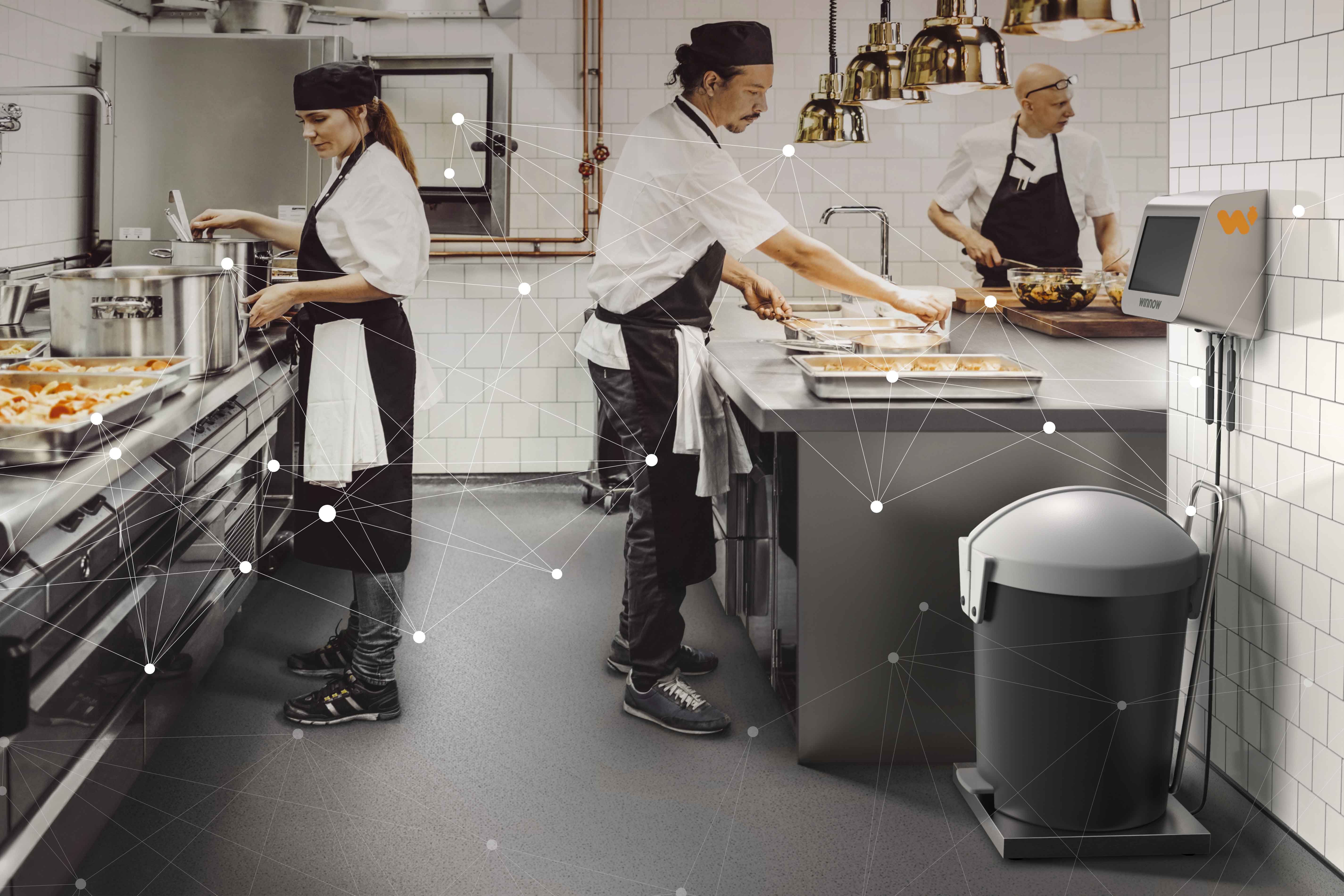
Food waste reduction: Everything you need to know
How to control food waste in restaurants and canteens across hospitality, education, and contract catering

Jump to a section:
How to reduce food waste globally
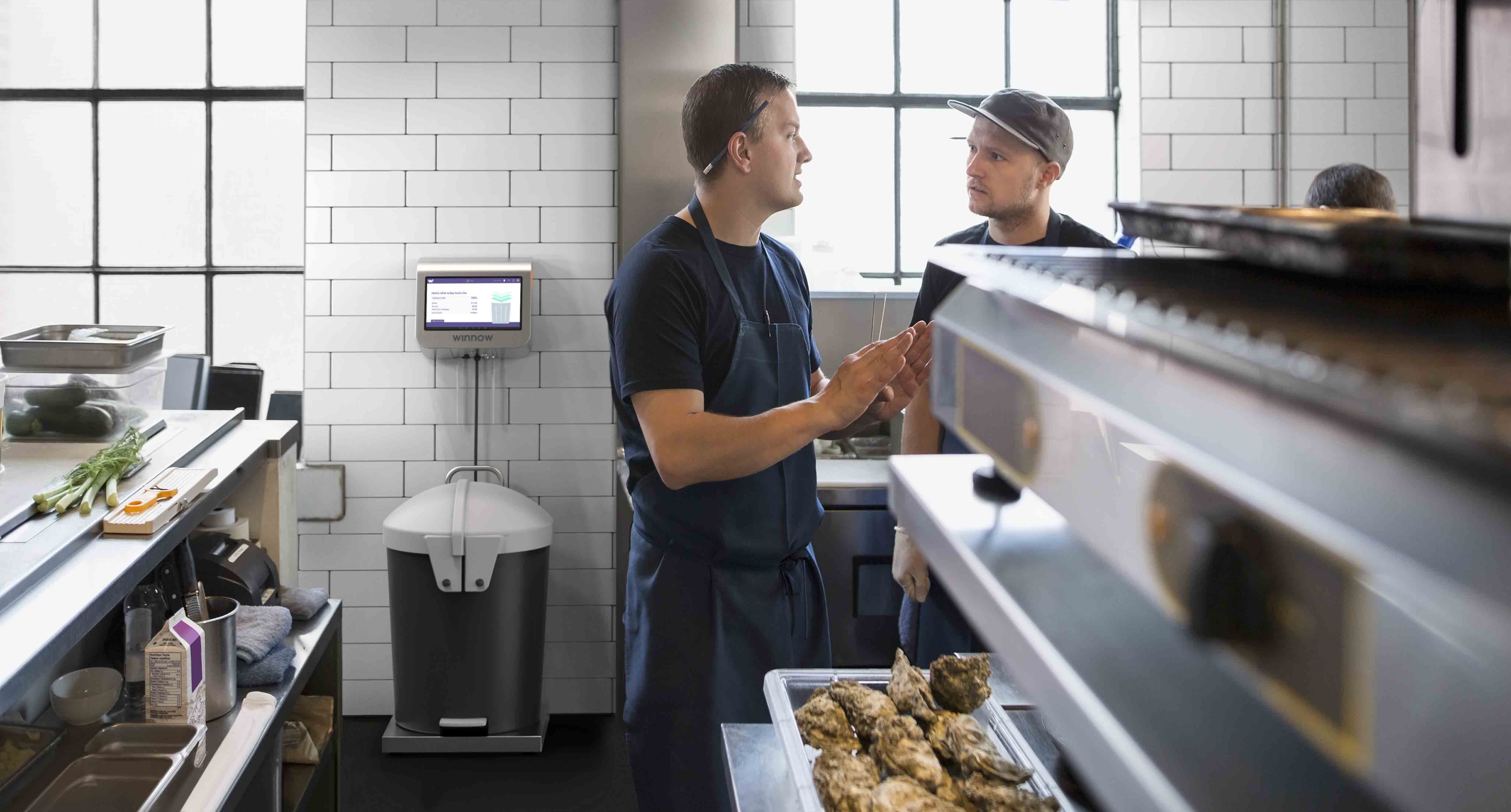
Food waste reduction is a topic that's been garnering a lot of attention among hospitality professionals globally. The benefits to reducing food waste are numerous: kitchens who produce food at scale can slash food spend while running a more profitable and sustainable operation.
You may also be aware of an increased number of brands who are publicly setting food waste reduction targets. Will this benefit your business, and if so is it something to consider? The short answer is yes, and here are some examples of companies that are leading the way:
- IKEA have saved more than 3 million meals already and aim to reduce food waste across their entire business by 50% before the end of 2020
- Marriott International aim to reduce food waste by 50% by 2025
- Accor Hotels aim to reduce food waste by 30% by 2020
- Costa Cruises - a subsidiary of Carnival Corporation - set the goal of reducing food waste on their ships by 50% by 2020
If you’re interested in saving money in your kitchen, download this guide to learn more:12 Ways to Drastically Cut Your Kitchen's Cost
Cutting food waste has real bottom line benefits
Do you know how much food waste is costing your business?
Food waste in restaurants can be as high as
8-12%
of total food spend
Our clients cut their food costs by between 2 and 8%
See how 3 hotels in Asia have successfully cut waste and increased profitability in their kitchens
Food waste tracking can return up to
1000% ROI
In year one
Typical ROI 200%-1,000% within the first year of using Winnow
See how IKEA Bergen reduced food waste by 45% over the first 12 weeks
Food waste prevention
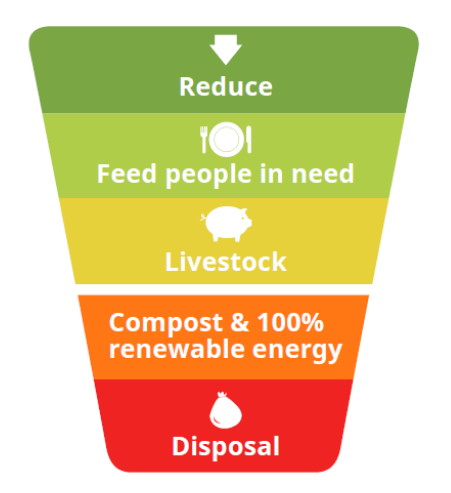
There are many ways to reduce your food waste to be more sustainable. This is achieved through a 'Food Recovery Hierarchy' inverted pyramid. Right at the bottom of the pyramid you'll find the worst option of handing your food waste - Letting it decompose in a landfill. And, at the very top you'll find the best method of dealing with food waste - preventing it from happening in the first place.
Let's go through the various stages of 'Food Recovery Hierarchy' developed by the EPA starting from the most preferred to the least preferred.
Reduce wastage at the outset: It's best to reduce food waste straight from the source and prevent it from happening in the first place. Hotels, restaurants and caterers can use food management tools like Winnow to help accurately measure and manage food.
For whatever food waste can not be reduced or prevented, it's most important that the food is redistributed to feed people in need.
Feed Animals: If the food is not right for human consumption, waste food can be fed to livestock such as pigs. This step in the process helps to reduce some of the enormous demand that livestock requires - currently around 35% of crops are grown to feed livestock.
If the food can not be fed to animals, it can be turned into renewable energy through composting by anaerobic digestion plants.
However, these options are less desired than simply preventing food waste from occurring in the first place. As, when we waste food we also waste all the resources that go into producing this food such as land, labor, water, transportation etc. Compost doesn't differentiate between beef that needs a lot of land and about 15,000 liters of water per kg verses potatoes that require about 300 liters of water to produce one kg.
Landfill: Food ends up being disposed of in landfill. This is the worst case scenario from both an environmental and a financial point of view. There is no value to the waste if it is disposed of. Food emits methane gas when it decomposes which is thought to be 30 times more potent than carbon dioxide as it is a green house gas that can trap heat. This is what makes food waste one of the world's leading causes for global warming. In fact if food waste were a country, it would be the third largest producer of green house gases after the USA and China.
The graphic illustrates the food waste hierarchy as waste moves through the process, with the most preferred solution at the top.
So how do you prevent food waste in the first place?
The solutions to avoid creating food waste often correlates with the location that the food is wasted. In developed countries like the US, food is considered a nearly unlimited resource. As a result, there are exacting retailer standards on the shape and size of food, meaning there is lots of waste at the agricultural level: Reports show that 25 per cent of apples, 20 per cent of onions and 13 per cent of potatoes grown in the UK are still wasted on cosmetic grounds. Strict aesthetic standards for food and lavish buffets are a part of the reason 40% of food waste in the USA comes from consumer facing businesses.
In developing countries, poor infrastructure and efficiencies along distribution lines means that a lot of food loss occurs at this stage. By expanding the cold chain - a temperature controlled supply chain - in these areas, an estimated $270 billion could be saved.
From an environmental perspective, food waste reduction targets have been set in accordance with the UN’s Sustainable Development Goals (SDGs), halving food waste by 2030.
There will need to be significant food waste reduction roadmap for this to be achieved across the hospitality industry.
On a national basis, countries like Denmark have become leaders in food waste reduction. Over 300 locations across the country have labels in their windows that indicate they are actively taking measures to reduce waste.
Movement is happening on a corporate level as well. Some of the largest companies in the industry are driving this change. For instance, Compass Group - one of the largest contract catering businesses in the world - have created an annual Stop Food Waste Day to help awareness of the global food waste crisis.
In the hospitality industry, Winnow estimates that at least $100 billion in food waste goes to waste each year. The best way to prevent food waste is through digital solutions that help kitchens to monitor and ultimately monitor their waste. With the data in hand, Executive Chefs and their kitchen teams can reduce food waste in half.
In an interview with Winnow, Fabrice Blondeau, the managing director of F+B Consulting International, stated that digital tools are the optimal solution to reduce waste in commercial kitchens.
To improve this process further, Winnow launched an artificial intelligence product - Winnow Vision - to automate food waste management. This means that that digital solutions fit seamlessly into kitchen environments, and ensure that kitchen teams save time and reduce food costs. For more information, head over to our product page.
In the next section, we look at practical examples of businesses around the world cutting food waste.
Restaurant food waste reduction ideas
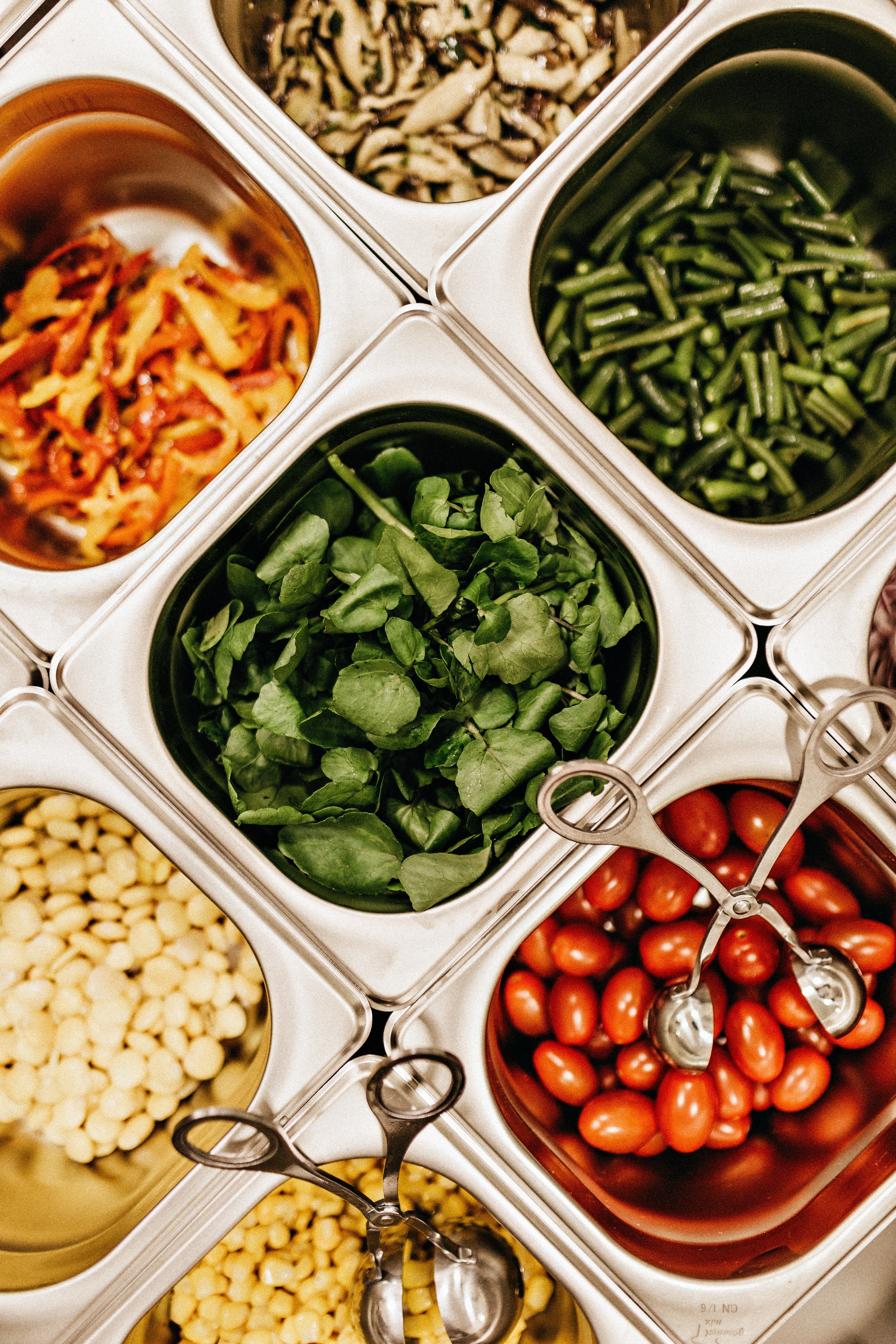
If you are a chef in need of some tips to reduce food waste in your kitchen, below are three simple ideas to reuse food that might otherwise go to waste.
- Buffet waste:
Buffets are a high area of waste, so what are some waste reduction ideas to help? Thomas Thinning Petersen, Executive Chef at Hotel Scandic Copenhagen says that they considered shutting the breakfast buffet after receiving Winnow’s food waste report. However, in the end, they took a different approach:
“We decided to continue with the breakfast buffet, but we implemented small changes that are being very helpful. We are now using smaller dishes, and we are cutting down the number of buffets when the hotel is not fully booked.”
This example shows that with the right information, waste can be reduced through good management rather than compromising on the experience for guests.
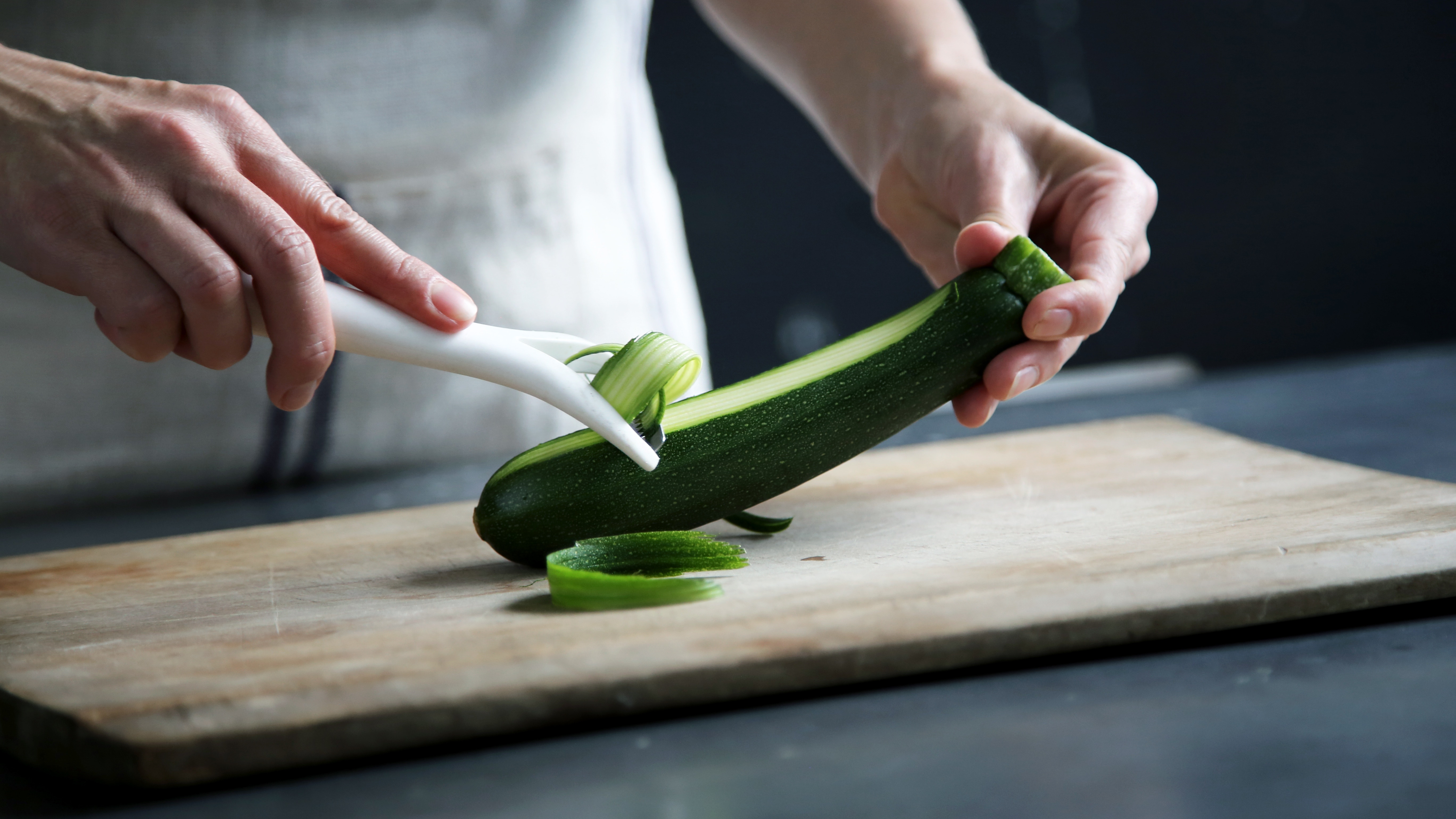
- Trimmings:
Every kitchen has a supply of food waste trimmings, but how can they be used?
Yousef Al Khammash, the Executive Chef at Mohammed Jalal Catering in Bahrain, has done a lot of work in reducing the trimmings in his operation:
“We make use of our trimmings by turning it into stock. Carrot peels, celery cores, lettuce, leeks, mushroom stems, potato peel all work really well for creating stock…celery leaves that would usually get thrown away, are full of flavor and a great addition to meatloaf, soups, and stews as well.”
In addition, Yousef has a very interesting approach of using trimmings to reduce his use of tin foil, further reducing the environmental of his kitchen:
“Since aluminum foil isn’t environmentally friendly, we decided to replace it with carrot, lettuce and cabbage peels while cooking in the oven. We wrap the meat we cook in carrot peels and put it in the oven or just put the meat on top of the peels before popping it into the oven. This adds extra flavor to the meat while being much more eco-friendly and sustainable.”
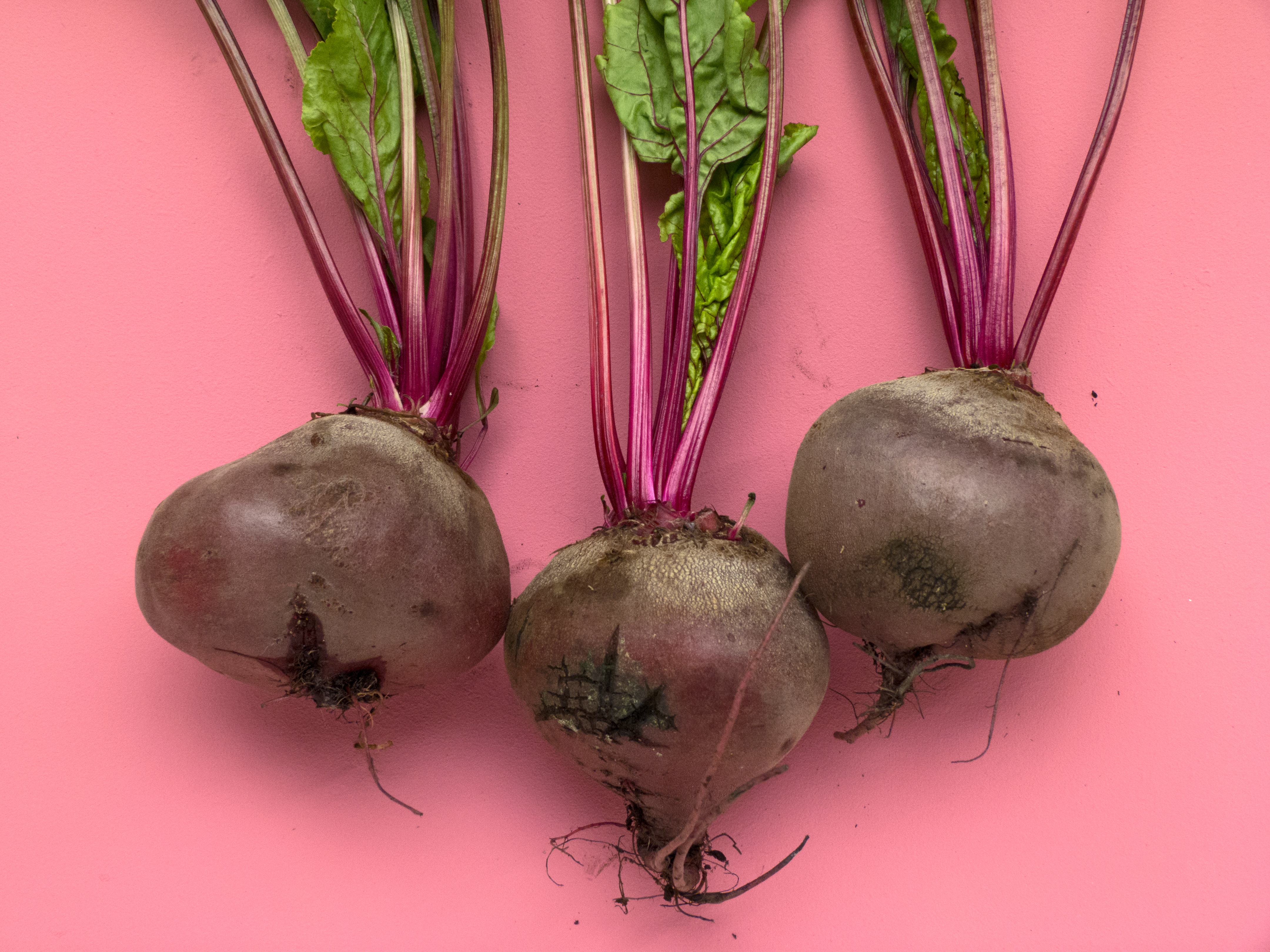
- Waste ideas in festive periods
Tom Hunt, a renowned chef, food waste activist, and author of The Natural Cook shares some of his ideas to reduce waste in festive periods like Christmas. He recommends using this common ingredient to make a delicious and healthy vegan dip:
“Beetroots are great products because you can use the entire vegetable, including the leaves. Actually, beetroot leaves make a delicious vegan dip for Christmas. All you need to do is wilt them with lemon zest and garlic, mix with soya-yoghurt and then top with crushed nuts and a sprinkle of za'atar or spice. Simple, healthy, sustainable, and delicious.”
Food waste in different sectors
Food waste in hotels and casinos
The food and beverage (F&B) facility in hotels and casinos are similar in the sense that for both businesses, the F&B operation contributes a minority percentage of overall revenue. This has meant that traditionally less focus has been spent on optimizing the food operation.
However, as staff costs rise around the world and food costs look to follow in many regions, hotel food waste has emerged as a key trend for the world’s largest hotel chains.
This is especially true in luxury hotels that serve one or more buffets each day, and often boast several restaurants across their grounds. Across a portfolio of hundreds of hotels, reducing food waste by over 50% can make a significant difference to the bottom line. For instance, Winnow is helping AccorHotels in properties in Asia Pacific to cut food waste and save an aggregated $880,000.
Reducing business food waste within global corporations
Staff canteens are another significant area of food waste. Each day the caterer only has a rough indication of how many members of staff will be eating. This is particularly true in urban areas where staff have many other lunch options, making it very challenging to prepare food and minimise waste.
Nonetheless, by tracking the waste trends on a daily and weekly basis, staff canteens can considerably reduce waste and align the savings with broader company goals.
Technology giant SAP are one company that are reaping the benefits. With the help of the daily insights on waste food, the team was able to save 10,000 meals in 3 months and is now rolling out to other offices across Germany.
Reducing food waste in schools and colleges
Reducing food waste in schools and across university colleges has similar problems (and solutions) to catering facilities in staff canteens and other catering facilities.
However, there is another angle to reducing food waste in school cafeterias. There is the element of education that can be combined with any food waste practices taking place. Schools can educate students on the scale of food waste, what governments around the world are doing about food waste, and the solutions to tackle the issue.
Reducing food waste on cruise ships
Food waste reduction on cruise ships is particularly important because unlike typical large restaurant operations, cruise ships do not have waste collection services when they are out at sea. Instead, cruise ships rely on their visits into port to dispose of their food waste responsibly.
This is a financial consideration as the waste collection fees at ports can be very high, however cruise companies are also at risk of legal fines if they dispose of food waste at sea.
Cruise companies also have an incentive to reduce food waste because of the high carbon footprint from the sector. With thousands of people on a single ship, reducing food waste by 50% saves thousands of tonnes of CO2e (carbon dioxide equivalent). Read more about the trends in cruise sustainability on our blog.
How we've helped clients reduce food waste in their industry
Winnow is the leading food management solution for the contract catering, hotels & casinos, quick service restaurant, supermarket, and cruise ship sectors. Find out how we've helped our clients.
Frequently Asked Questions
What are the benefits of reducing food waste?


There are three main benefits of reducing food waste in kitchens; reduced cost, reduced environmental impact, and improved operational efficiency. However, the benefits of food waste reduction differ depending on the role within a food and beverage operation. For more information on specific role benefits, head here.
How quickly can waste be reduced?


With insightful waste information in the hands of the right people, reduction can happen fast. Within the first three months of installation, food waste technology can pinpoint the areas to target first and begin making significant reductions. Once the quick wins have been achieved, the next stage is for the data to identify areas of further optimisation before the waste level stabilises. On average clients reduced waste by over 50% in the first year.
What is the average food waste percentage in restaurants?


Due to the lack of good data in the hospitality industry, there is not a clear and accurate figure for the average food wastage within restaurants. However, data analysed from Winnow kitchens in over 200 catering sites and 200 hotels shows that the average waste levels is between 8-12% of food spend.
How much could I save by reducing food waste with Winnow?


Winnow’s data shows that on average kitchens waste between 4%-12% of all food purchased. Kitchens using Winnow’s analytics can expect to cut this in half in 6-12 months. This equates to an average saving of between $5k a year for a smaller site through to $50k+ for a large hotel or staff restaurant.



